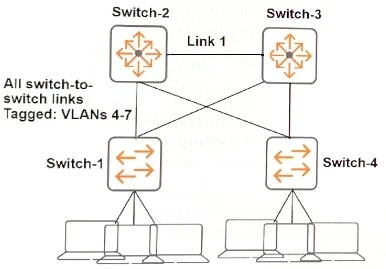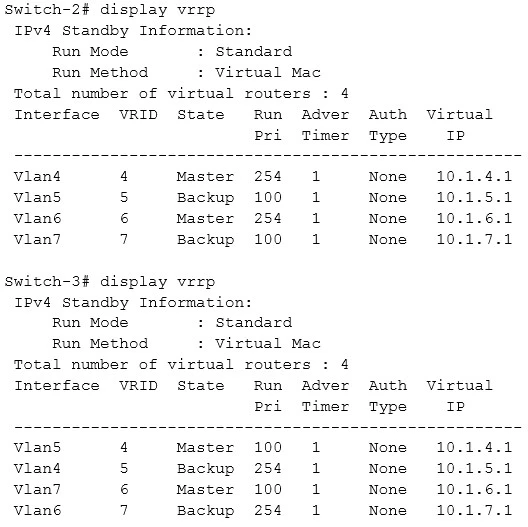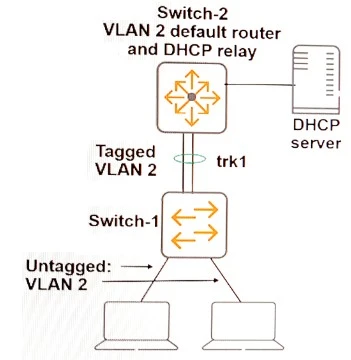Exhibit 1.

Exhibit 2.

The company wants to minimize congestion on Link 1.
Which spanning tree implementation meets this goal?


To minimize congestion on Link 1, switch-to-switch traffic should be evenly distributed across the switches. By assigning Switch 2 as the root for VLANs 4 and 6, and Switch 3 as the root for VLANs 5 and 7 (as detailed in Option B), traffic will be better balanced. This ensures that no single link is disproportionately utilized, thereby minimizing congestion on Link 1.

To ensure DHCP snooping operates correctly and clients receive the appropriate DHCP settings, you need to define the trunk port (trk1) as a trusted DHCP port. By default, all ports, including trunk ports, are considered untrusted, which means DHCP offers and acknowledgments cannot pass through them. Defining the trunk port as trusted allows the legitimate DHCP traffic to be forwarded to the clients.
When Device 1 crosses the threshold and triggers the action, the switch temporarily drops all IP traffic from Device 1 only. This is in line with how connection rate filtering typically functions, where the specific offending device is targeted rather than an entire interface.